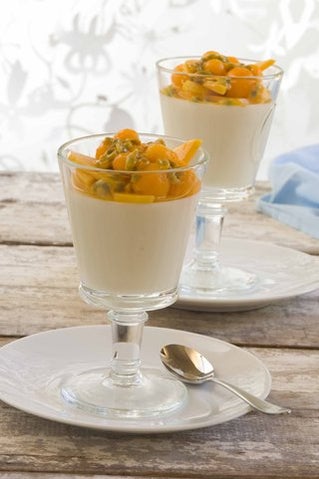Marvellous Milk Puddings
We're all reeling from the escalating price of milk, but it's worth bearing in mind that milk is still relatively cheap and, in nutritional terms, good value.

We're all reeling from the escalating price of milk, but it's worth bearing in mind that milk is still relatively cheap and, in nutritional terms, good value; it's not only the best source of calcium, but an excellent source of protein. It's packed with goodness for all the family and we shouldn't be cutting down on milk consumption. Remember, too, that milk puddings, as well as steam puds, are economic in that they are great “fillers” for the hungry young at a streamlined cost.
There's nothing more heart-warming and nourishing in winter than a milk pudding – and if some of the family turns their noses up at the thought, clever cooks can make them popular with all ages!
It was in the 10th century that milk puddings started becoming popular in Britain, when they were especially linked to nursery and nanny and to invalid fare. One of milk pudding's forerunners was called Hasty Pudding and was just a porridge of flour and milk, easy to make; it may not sound very appetising but sprinkled with spice or rosewater and dotted with butter it can be quite acceptable (though, you might have a job persuading the children!). A baked offshoot, Malvern pudding, was made of layers of hasty pudding, cooked apple and egg. In the north of England and Scotland, hasty pudding evolved into a mix of oats and barley that could also be made of water, Victorian children had hasty pudding made with milk and sago or tapioca.
Custard with stewed fruit goes down well. Semolina on its own is pretty bland, but nutmeg lifts it somewhat and it, too, is good with fruit or – as friends used to have, with blackberry or blackcurrant jelly stirred in at the table.
Rice in pudding type dishes can be traced as far back as Roman times, although then it was only used to settle upset stomachs. There were mediaeval porridge type dishes in which cooked rice was mixed with almond or cow's milk and sweetened. Baked rice puddings, often fairly elaborate, made their appearance in the 18th century in England, but one thing that has come down since then is the inclusion of raisins or sultanas in a rice pudding. Also, you can make rice pudding with chocolate milk which may encourage the younger members of the family.
The skin on a rice pudding tends to polarise people – some love it, others loathe it! Sago or tapioca pudding can be made the same way…in the oven, sweetened and with butter. Couldn't be simpler – but do remember that all of them need to be cooked slowly. There are also milk puddings that can be made on the stove top. Sago is another pudding which tends to have its devotees and those who would rather eat anything else – its appearance akin to frogs' eggs puts some people off.
I came across a recipe the other day for “Poor Man's Rice Pudding” which was stirred as soon as a slight skin formed, and at the end of cooking was sprinkled with nutmeg and covered with marshmallows soaked in milk for two hours – then it was returned to the oven until the marshmallows melted and went light brown.
So, have a go at some “nursery” puddings this winter – they will help the milk go further and are a useful addition to the menu on a cold night. The following recipe suggestions are variations on the traditional milk pudding, to ring the changes or serve to guests.
Almond Milk Pudding is delicious – and it's a useful alternative for anyone with a milk allergy, but if you really want to be different try Black Rice with Lime Coconut Cream.
A delicious combination is Rose-Scented Honey-poached Pears With Pistachio Rice Pudding. Bread And Butter Pudding is a long-time standby, economic to make, but if you want to be just a little different, tune it up by trying Bread And Butter Pudding With Whisky Sauce. Cardamom Cream Rice With Papaya is a delicious combination, and a real dinner party finish can be achieved with Mascarpone And Vanilla Sago Brulée.


Comments (0)
Please login to submit a comment.